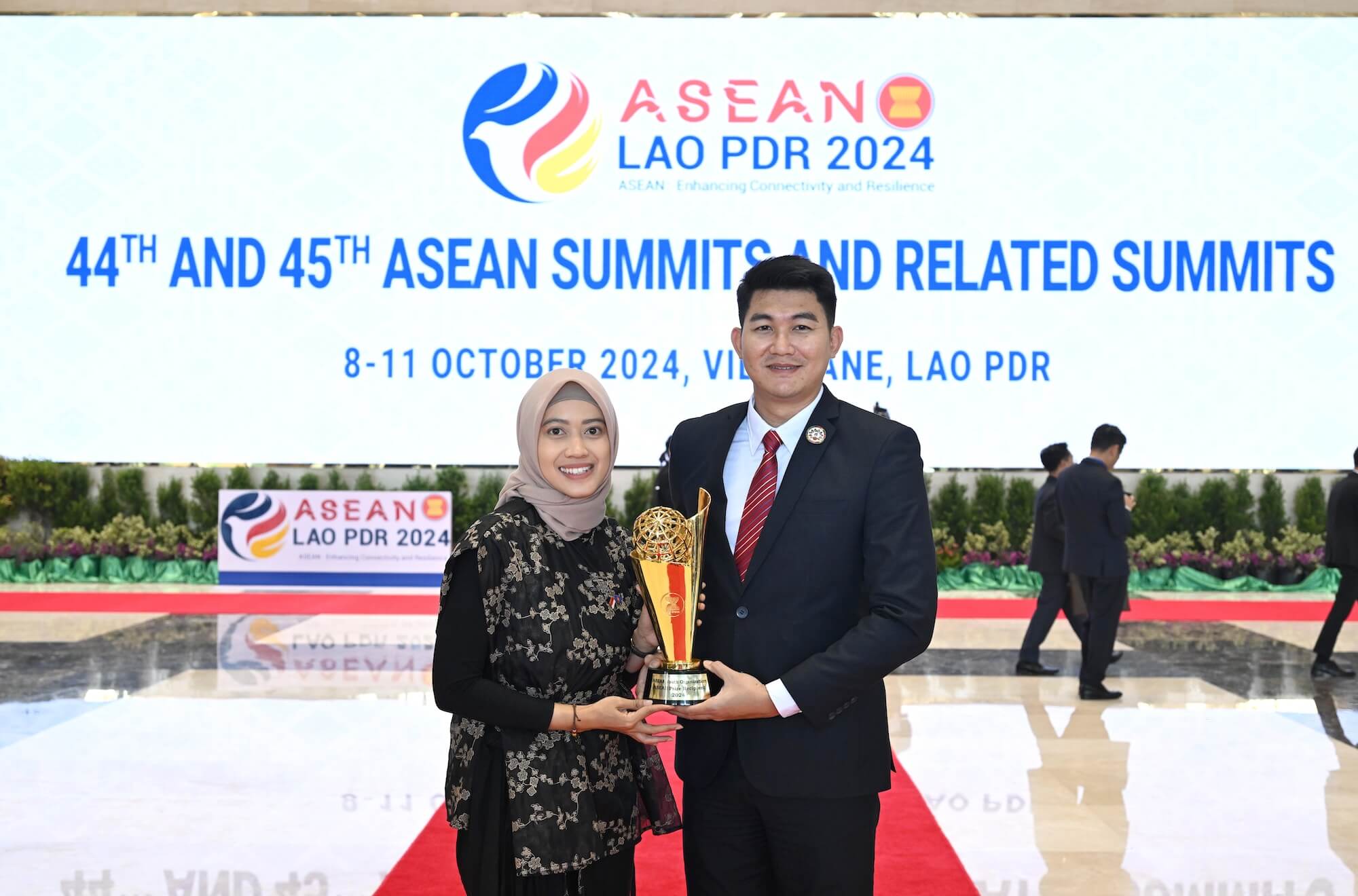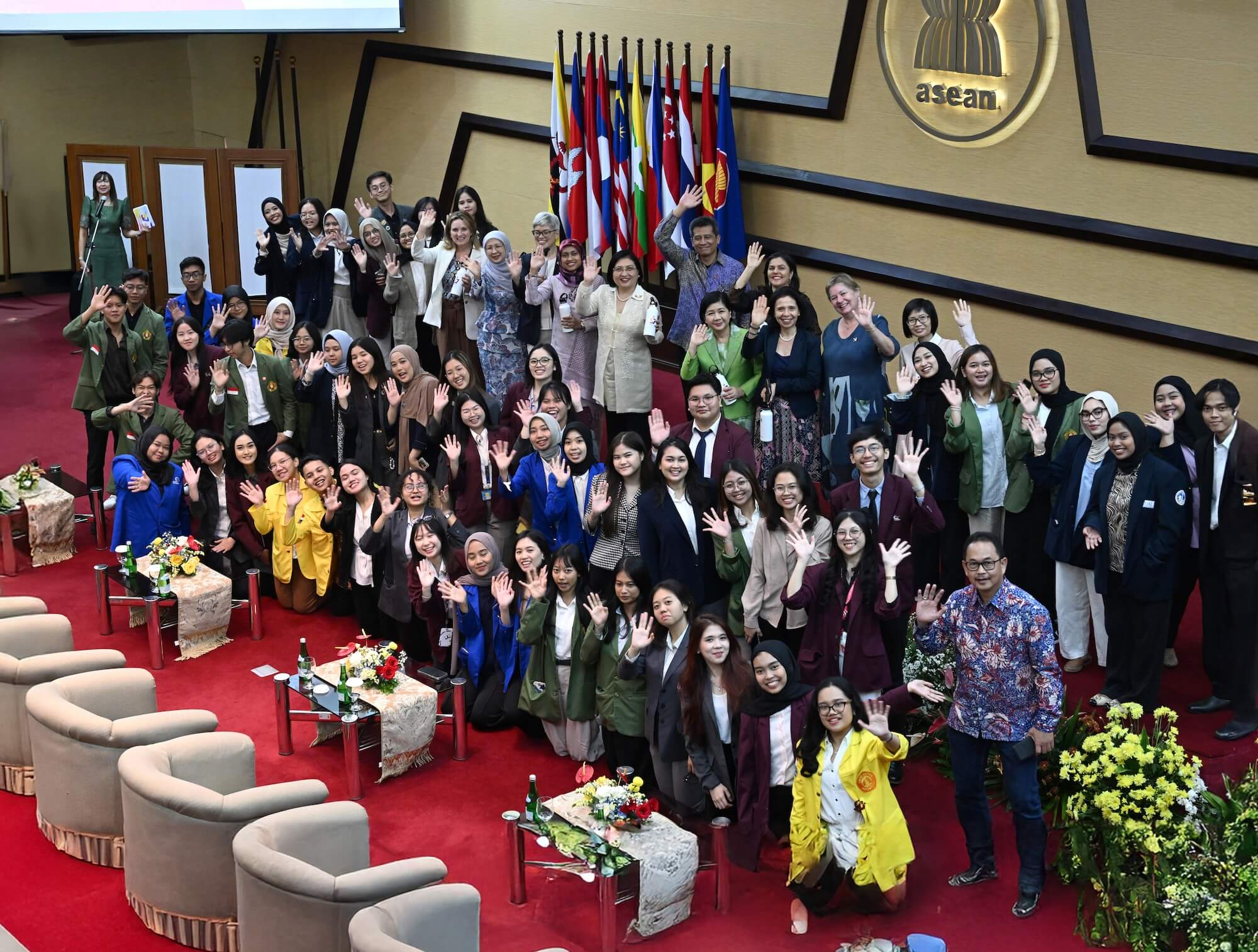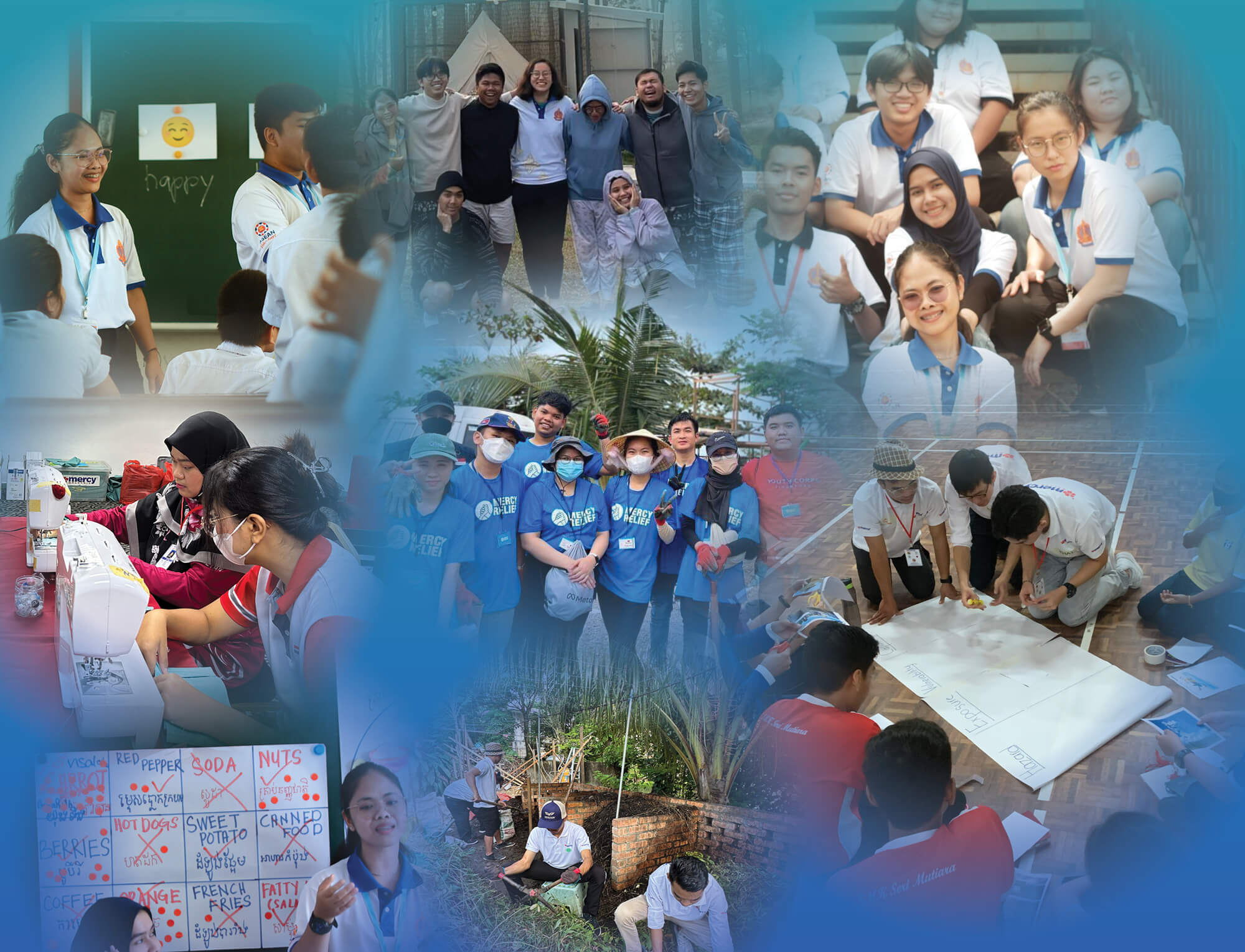



The creative economy has the potential to not only strengthen the expansion of global value chains, increase digital adoption among creative small and medium-sized enterprises (SMEs), fuel the export of cultural goods and creative services, and foster ownership through local engagement, but also contribute to the overarching goal of sustainable development. The global market for creative goods increased considerably from 436 billion US dollars in 2002 to 964 billion US dollars in 2015 (UNCTAD, 2021).
Southeast Asian countries are among those that have extended support to their creative industries to boost the creative economy, realising that knowledge-based economic activities can foster income generation, job creation, and export earnings while promoting social inclusion, cultural diversity, and human development (UNCTAD, 2010).
Following the global trend, creative trade in Southeast Asia has also risen in the past decade. Countries like Indonesia, Malaysia, the Philippines, Singapore, and Thailand have been increasingly promoting trade in creative goods and services. Singapore, for example, is currently the world’s 10th largest exporter of creative goods, generating 743 billion US dollars in profits (UNCTAD, 2018) and creating 12.7 million jobs (UNESCO, 2015). Meanwhile, Indonesia reached a growth rate of almost 30 per cent for its exports of creative goods during 2012–2015. Indonesia also contributed to changing the landscape for the creative economy in Southeast Asia as a strong advocate and the main sponsor of the proposal to declare 2021 as the UN International Year of Creative Economy for Sustainable Development. To strengthen creative industries, Thailand re-established the Creative Economy Agency (CEA) in 2018 to foster collaboration and lead the direction of the creative industries. In the Philippines, the Philippine Creative Industries Development Act filed at the House of Representatives proposes the establishment of a Creative Industries Council to drive the development plan for recovery and growth of the creative industries in the country.
While the creative economy has offered a large potential for socioeconomic growth, the COVID-19 pandemic has hindered the industry’s progress and resulted in loss of livelihoods and income. Comprehensive policy responses for the creative economy need to be in place to assist its recovery and assure its resilience and sustainability, both in normal and unprecedented circumstances.
Overview of the Creative Economy in Southeast Asia
The value of creative trade in ASEAN, for both exports and imports, has been increasing since 2003. However, the growth of creative trade declined during 2012–2015. A decrease in exports was evident in Malaysia and Thailand, while a decline in imports was evident in Indonesia, Malaysia, Singapore, and Thailand.
According to UNCTAD’s statistical breakdowns, the export of creative goods in Southeast Asia has depended mainly on the design sector. Singapore has contributed the largest proportion, which has caused an unbalanced development of the region’s creative industries (Sioson and Korwatanasakul, 2021). To understand Southeast Asia’s creative economy landscape in more detail, we describe the best practices of selected ASEAN countries (namely Indonesia, Singapore, Thailand, and the Philippines) to extract policy recommendations in addressing the challenges in the region.
Entrepreneurs in Indonesia have been progressively engaged in creative economy initiatives for sustainable development in recent years by adopting digital platforms and other digital tools to connect their culture with broader audiences. For example, videos of the famous Indonesian singer and YouTuber Rainych Ran, became viral in Japan and elsewhere, showing that the “directional flow of the cultural goods has diversified from source to consumer countries all around the ASEAN region” (Nakajima, 2021). The younger generation can harness the new digital landscape, such as Internet media technologies and social media and networking sites, to facilitate the delivery of their creative products. Such multidirectional flows can help promote the soft power of a country and heighten cultural diversity (Nakajima, 2021).
Singapore, as a leader in advancing the creative economy in the region, has developed a robust climate for creative businesses and entrepreneurship. To foster an environment where creative industries can flourish, Singapore has focused its efforts on creating “a cohesive and welcoming multi-cultural society; strong intellectual property laws to protect ideas” (Wee, 2021). Strong collaboration among networks of creative agencies has created multiple events, such as the Design Week, Writers’ Festival, and International Festival of Arts. Singapore also nurtures creative talents by opening opportunities to expose students of all levels to arts, design, digital, and media in cooperation with the Ministry of Education (Wee, 2021).
To drive the growth of the creative economy in Thailand, the CEA has established the Thailand Creative District Network to connect the public and private sectors with civil society to promote creative environments for the industry. The CEA also facilitates the application of UNESCO Creative Cities for Bangkok and Sukhothai, has organised Bangkok’s Design Week since 2018, and established the CEA Online Academy, which offers online creative courses for capacity building and the CEA Vaccine for SME consultation (CEA, 2021).
The Philippines’ creative economy has continued to grow. The creative industries, mostly from the copyright-based formal sector, comprise 6.52 per cent of the country’s GDP in 2012. The creative economy generated 3.2 billion US dollars in 2018, mainly from creative services such as software and IT services, animation, game development, digital marketing, and design services, making the country number one in the ASEAN region. Despite this success, there is no creative economy center or government agency in the Philippines in charge of the sector to date. A huge segment of the industry relies on freelancers, who are estimated to number around 2–4 times as many as those in the formal sector but are unaccounted for in official statistics, making it more difficult to assist them during the COVID-19 pandemic (Mercado, 2021).
Although the creative economy has much potential, challenges remain, especially due to the lack of appropriate policies to support the industries. Insufficient f inancing and financial sustainability and a lack of standard valuation of creative work could stagnate its growth (Sioson and Korwatanasakul, 2021). For example, Thailand faces the challenges of a lack of common understanding on the meaning of creative industries and the rapid changes in the digital landscape (Punpeng, 2021), while the Philippines needs a centralised government agency to create a policy roadmap for creative industries (Mercado, 2021).
Amid these challenges, the COVID-19 pandemic has significantly affected creative industries worldwide. Although there are no data available on its impact on the industries in Southeast Asia yet, UNESCO (2021) has estimated an overall contraction of 750 billion US dollars in gross value added by cultural and creative industries worldwide in 2020. Losses in revenue in these industries in 2020 could be in the range of 20 to 40 per cent across different economies, possibly resulting in 10 million job losses for creative workers globally, especially freelancers. The Philippines’ creative industries, for example, were likely affected severely due to the country’s heavy reliance on creative freelancers. Given the ongoing COVID-19 pandemic, a comprehensive policy framework for the creative economy must be developed to support the people and the economy to thrive and recover in the post-pandemic era.
Rebuilding After the Pandemic— Some Policy Recommendations
Fostering the creative economy in the Fourth Industrial Revolution amid the COVID-19 pandemic is a true challenge for countries around the world, not just those in Southeast Asia. We suggest the following three major socioeconomic factors for consideration when designing comprehensive policy frameworks or a roadmap for the development of the creative economy.
First, digitalisation can be adopted by (i) supporting technological innovation via financial support and the facilitation of R&D investment, (ii) strengthening ICT infrastructure for digital readiness, and (iii) facilitating digital transformation in all related sectors, areas, and groups of people. For example, creative entrepreneurs could tap on the proliferation of electronic-commerce (e-commerce) and mobile-commerce (m-commerce) sites in Southeast Asia to reach their markets and keep the economy alive despite the COVID-19 restrictions (Sioson and Korwartanasakul, 2021). When disruptions affect creative market demand and the market capacity to supply this demand, such as in the case of the Philippines, digital platforms can help to improve the demand for services and their delivery mechanism and find alternative markets, models, and revenue sources (Mercado, 2021).
Second, although technology is being maximised, it is important to nurture creative talents, which cannot be replaced by automation, to avoid extreme job losses. This can be achieved through (i) educational reforms to equip people with digital technologies and to upgrade the skills necessary in these changing times, (ii) capacity building initiatives for SMEs to support them in niche markets and national branding, and (iii) the establishment of mechanisms to protect intellectual property rights. Taking Singapore as an example, Wee (2021) noted that modernised technology is not enough, and cited “building a strong talent pipeline in new skills… creating platforms for rapid prototyping and experimentation amongst creatives, technologists and business” should intersect with technological advancement. The development and enforcement of international property rights laws and regulations will encourage more ideas for creative products and services.
Third, partnerships and networks for knowledge creation and cultural exchanges are essential for boosting creative industries and the production of cultural goods and creative services. These partnerships promote the recognition of cultural diversity and national branding networks, thus leading to an increase in demand for creative products. The partnerships and networks can be established at the international level (among countries) and the domestic level (e.g., city partnerships). Clustering or fostering city partnerships could assist in the technological shift to digitalisation, nurturing creative talents, and establishing an environment where creative workers in both the formal and informal sectors can thrive to reach the goal of sustainable development.
Additionally, immediate attention should be paid to the post-COVID-19 strategies for the recovery of creative industries and the economy. Due to the lockdowns and social-distancing restrictions, the adoption of digitalisation is necessary to continue economic transactions. The use of digital platforms and e-commerce can facilitate market expansion and reinforce connections for creative industries. Besides bridging people and markets, digitalisation is an essential part of developing creative products and services and executing innovative ideas and the approaches for delivering them. Moreover, financial support, e.g., subsidy campaigns and long-term loan programmes with preferable interest rates, must be offered to SMEs and creative entrepreneurs affected by the COVID-19 pandemic to maintain business liquidity.
The creative industries have increasingly played an important role in boosting economic growth for sustainable development. To support and promote economic activities in these industries, Southeast Asian countries will need to develop and design comprehensive and inclusive policy frameworks, taking into account cultural diversity and digital advancement.
The original version of this article was previously published in the Asian Development Bank Institute’s Asia Pathways blog. The original version, including the references list, may be downloaded from: https://www. asiapathways-adbi.org/2021/09/ supporting-creative-economysustainable-development- southeast-asia/








